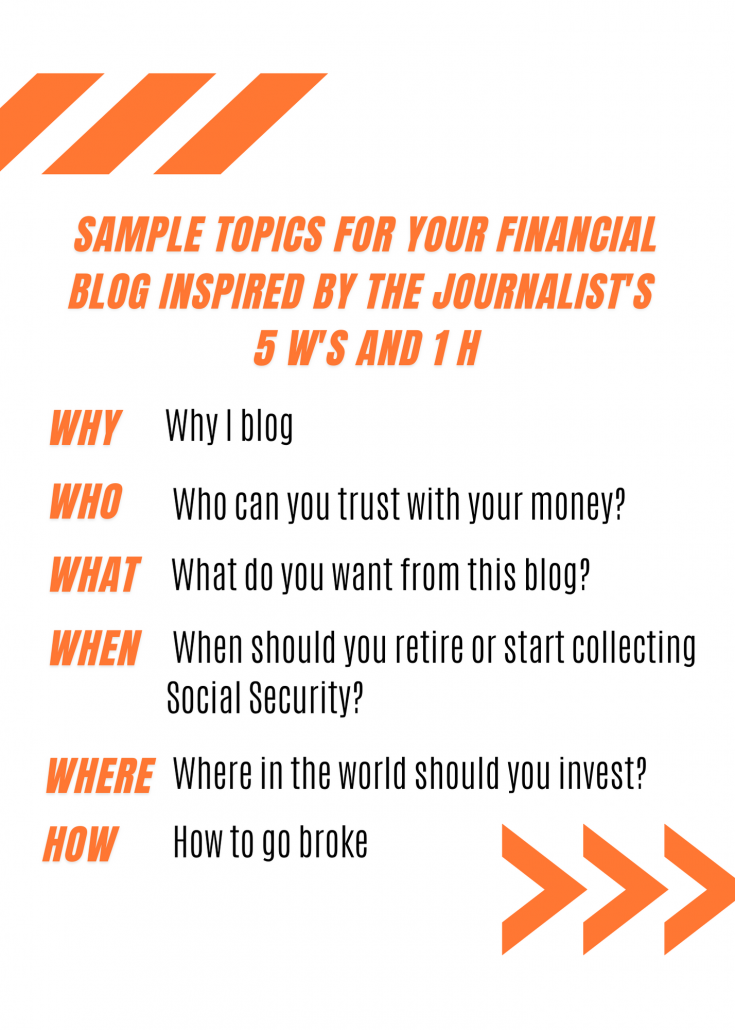Carolyn McClanahan’s fearless sharing of her opinions across social media, including on her blog, spurred me to ask her to participate in my Q&A series with financial advisors who blog. She’s a great example of an advisor who communicates her passion about her topics, which include the intersection of medical and financial planning issues. Carolyn, who began her career as a doctor, is with Life Planning Partners in Jacksonville, Fla.
Q. When did you start The Quest for Simplicity, your blog for Forbes?
A. November 2011.
Q. How has your blog brought you new business or improved your existing client relationships? Please explain and quantify, if possible.
A. Unlike most financial planners, whom I assume blog for business development, I’m blogging for my colleagues in the industry and opinion makers. The purpose of the blog is to educate other financial planners and the public about an area in which our firm, Life Planning Partners, excels—incorporating health conversations into all aspects of financial planning. The firm’s goal is to be an innovative financial life planning practice that is nationally recognized as doing great things for our clients and the profession, demonstrates a model other financial planners want to emulate, and serves as a base for us to make great change in the world.
Has my blog brought us new business? Probably not directly. Do our clients love my blog? Yes, they are very proud of the work we are doing to improve the financial planning profession. They participate in all our “experiments,” love when I share their stories (with permission of course), and refer clients to us readily. I think the referrals are not due to the blog alone – it is a combination of our great service and our ideals. Our business is so good that we had to close to new business for now. Our waiting list had grown to eight months long. I think we are doing something right. New business comes from a confluence of factors.
Q. How else does the blog affect your relationships with clients and prospects?
A. We actually share our business plan with our clients. By doing this, we’ve created a “tribe” of people who get what we do and are very supportive of the change we are trying to make in the financial planning profession. The blog is part of how we implement this change.
Most of the new clients who come to us have read the blog. My unbridled openness about some very controversial topics actually attracts clients to us. And the really good news—people who are uncomfortable with us do not come to us. Therefore, we have only ideal clients and our client retention is off the charts. We have authentic, deep, and difficult conversations with ease.
Q. How will you know if you’ve succeeded as a model for other advisors?
A. Our metrics are:
1. The number of people who read my blog.
2. The number of speaking engagements and type of topics I’m asked to provide.
3. The number of planners who ask about our business model so they can incorporate it in their practice. I will watch with interest how many firms move to retainers and hourly work over time.
Q. What blogging techniques or topics have most helped your business?
A. I think our authenticity and unbridled approach in discussing real problems goes a long way. Storytelling is the most effective way to get a point across.
Q. What are three of your favorite—or most effective—blog posts? Provide the titles, URLs and a comment about why you included them.
A. My most popular post is “Five Quick And Important Facts On Health Insurance Through Obamacare.” I think this was popular because it was practical.
Cliffs Notes Version of the Affordable Care Act — Again, a practical explanation of the law.
Gun Owner Rights and Obamacare – Yes It Is In The Law — Although I received a lot of flak about this article from the gun lobby, clients were overall very proud of this article. It was written right after the Aurora massacre, and was the first article pointing out the National Rifle Association’s hand in Obamacare. A reporter from Politico told me this article was the start of President Obama’s executive order protecting health care worker’s rights to ask about firearms in patient care settings. It shows how powerful words and calling out the truth can be.
Q. What’s your best tip for advisors who blog?
A. Writing a weekly blog is a lot of work, especially when you are running a small business. Over the past couple of months, I’ve run into a number of challenges. We are still reeling from the huge growth of our business, we are trying to hire additional help, and I spent some time taking care of loved ones.
A tip I read somewhere that I wish I would have followed? Have pre-written posts in place in case you run into a tight spot and have nothing to post.
Otherwise, only write about topics that you care about – your passion will come through.
If you enjoyed this post, check out this blog’s Q&As with Michael Kitces and Jim Blankenship. If you have a great blogging success story worthy of being featured in a future Q&A, please contact me. I’d like to hear from you.


